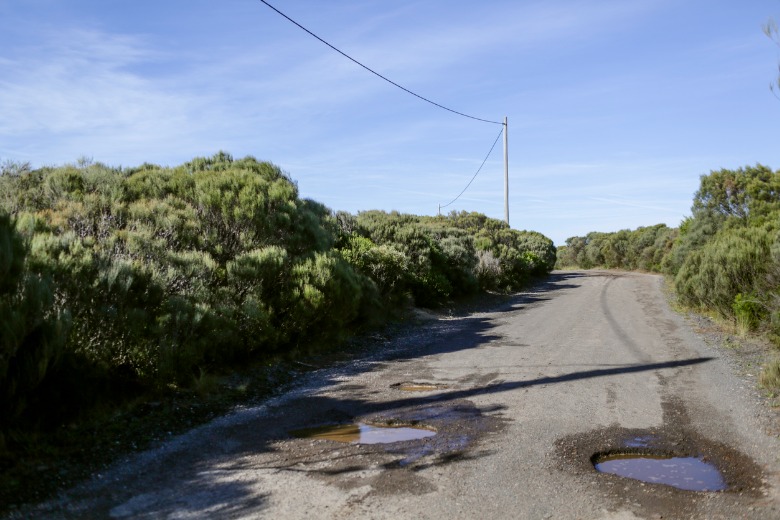
More than 77 per cent of roads in regional NSW have exceeded their typical lifespan, an internal government report shows.

The report by Transport for NSW’s regional and outer metropolitan division, marked as sensitive and obtained by Government News, rates about 2,000 kilometres, or 11.7 per cent, of regional roads as poor or very poor.
It says major highways are typically designed for a 40-year pavement life while minor road pavements generally have a 20-year design life.
“One of the greatest challenges is the sustainable replacement of road pavements that have reached the end of their useful life,” the Regional and Outer Metropolitan Asset and Service Plan for the next ten years says.
“The current rate of pavement renewal is well below the long-term sustainable target.
“The average age of pavements is increasing. More than 77 per cent of pavements in regional NSW have exceeded the typical minimum pavement design life of 20 years.”
About 35 per cent of state roads are more than 40 years old “and constructed for a traffic loading standard to the time”, which means in many cases they are expected to operate under loads and speeds that “far exceed” their original design.
It says the 2056 target of zero fatalities and serious trauma is at risk of not being met without significant infrastructure investment to reduce the safety risk.
The report also shows that more than 1,000 of the state’s 1,200 bridges are between 50 and 60 years old, and notes there are 65 timber bridges on regional roads. This is despite timber assets representing a high risk of service interruption in extreme events like fires and floods.
Funding shortfall
ROM modelling indicates there’s a funding shortfall of $805 million for the regional road network and it presents a second funding scenario which only addresses the highest risks and would result in a $1.3 million shortfall.
The report warns that increasing the size of the ROM network through the transfer of regional roads from local government to state management will “lead to a significant increase in funding required to meet safety outcomes”.
Opposition roads spokesman John Graham says the document shows the state’s roads are falling apart and blames systemic neglect.
“Billions of dollars have flowed into gold-plated toll roads, while our local roads are potholed, broken and underfunded,” he said.
A spokeswoman for TfNSW said funding decisions about assets and maintenance across the transport network always prioritised safety and security.
Investment in statewide road maintenance funding alone had increased by $60 million from the year prior to $1.3 billion for 2020-21, she said.
“We’re planning for the network’s future and responding to the challenges of population growth, bushfire recovery and the impacts of COVID-19 by getting on with the job of delivering a record $72.2 billion infrastructure program,” the spokeswoman told Government News.
The report also says a significant portion of the rail network is non-operational and 54 per cent of the country regional network, including 64 stations, is non-operational because of a lack of economic viability.
The cost of maintaining non-operational components of the network came to $2.8 million a year.
The report says regional NSW has come under increased focus because of the impact of bushfires and a post-covid migration of people from metropolitan Sydney.
All up, it recommends $56.6 billion over ten years, not including new policy proposals, to bring regional traffic assets up to and maintain a steady state by 2031.
Comment below to have your say on this story.
If you have a news story or tip-off, get in touch at editorial@governmentnews.com.au.
Sign up to the Government News newsletter
So whats new!
Look back a few years
We have spent Billions on M4 and its now many add on’s
All to the benefit of the Tolling operators.by way of handed them a perpetual cash cow.
Given the M4 was not part of any comprehensive Transport plan for NSW.
But overnight. the Money that was available, went on this mega project and now Transurban are the richer for the Secret unplanned tollway.
So, unsurprisingly the cost is revealed! Its the rest of NSW was road renewals were effectively unfunded. Local Councils told to do more with increasingly little!
Technically speaking, if a road has reached the end of its useful life, it is no longer in service. The fact it may have exceeded its original design life has nothing to do with its current value and capacity to deliver a service.
There is a difference between useful life and design life, lets not confuse the two.
A sustainable pavement renewal target is one where the actual or proposed renewal expenditure for a period compared to the renewals deemed as warranted in the Asset Management Plan for the same period is within 90% to 110% over a rolling 3 to 5 year period, ideally longer if possible.